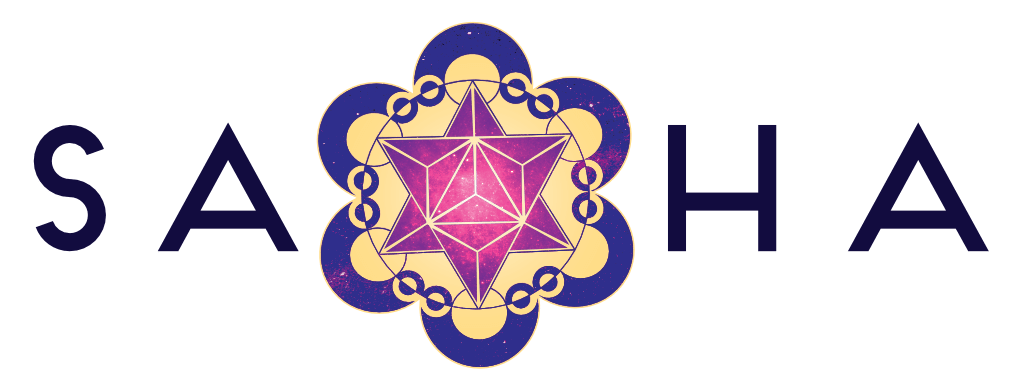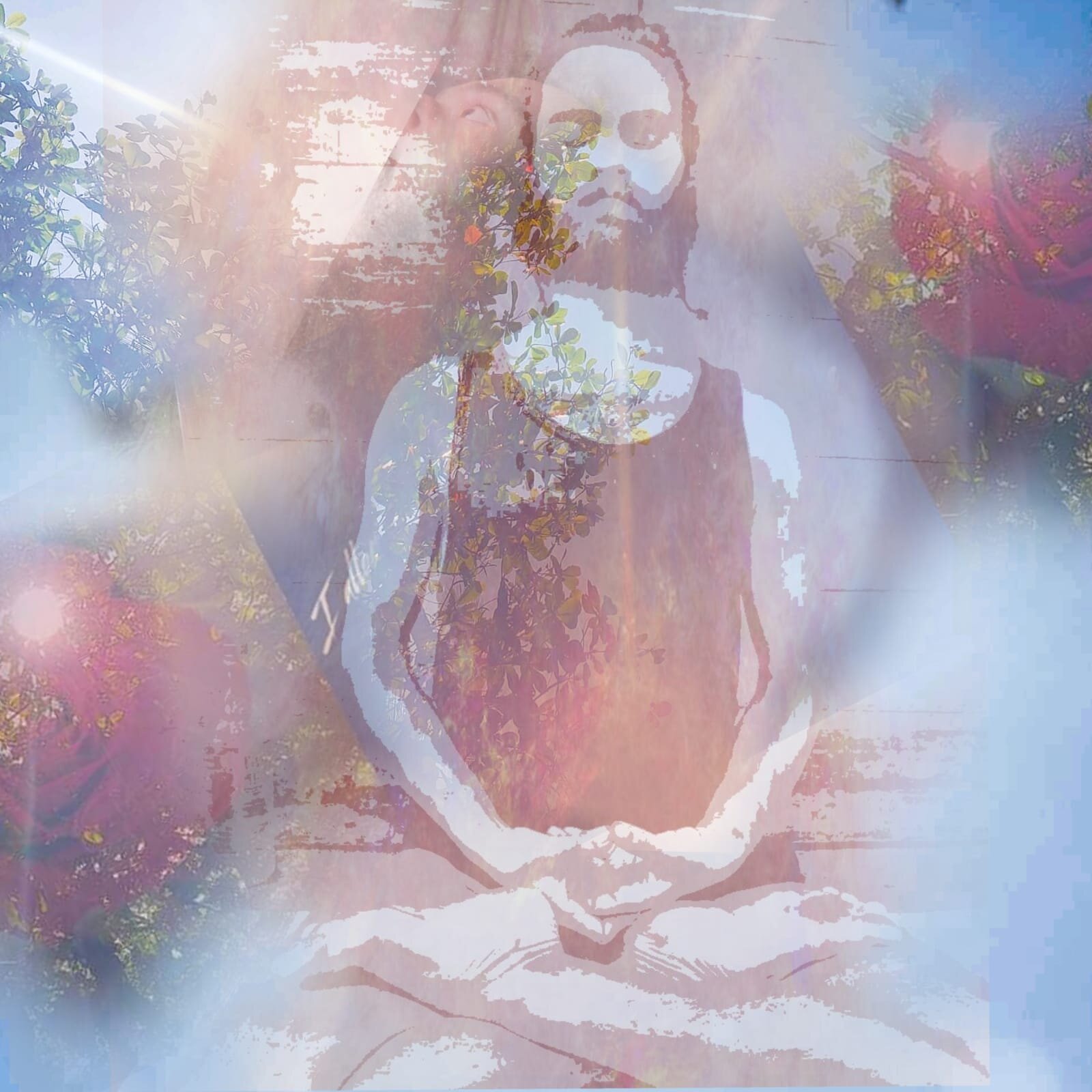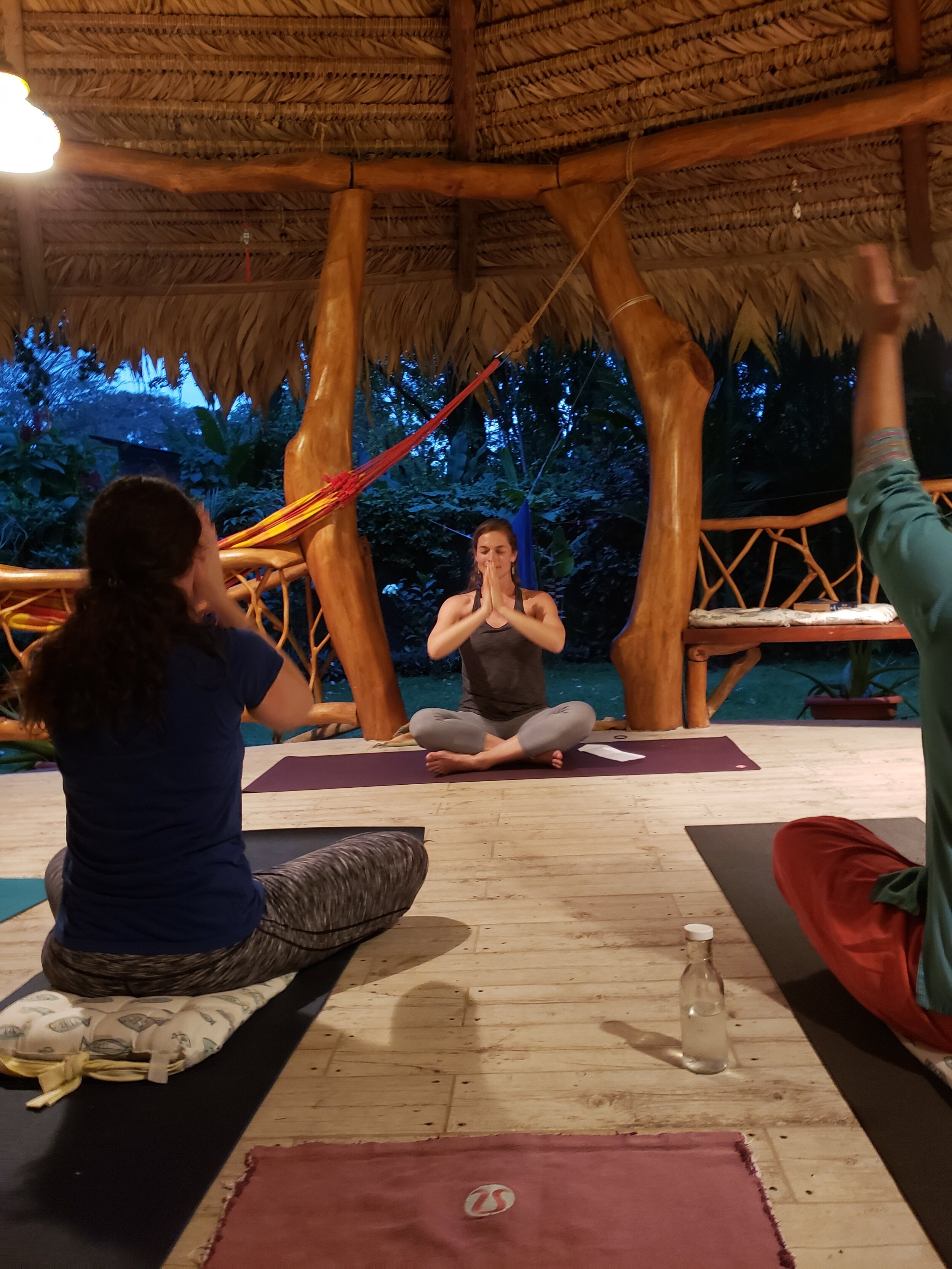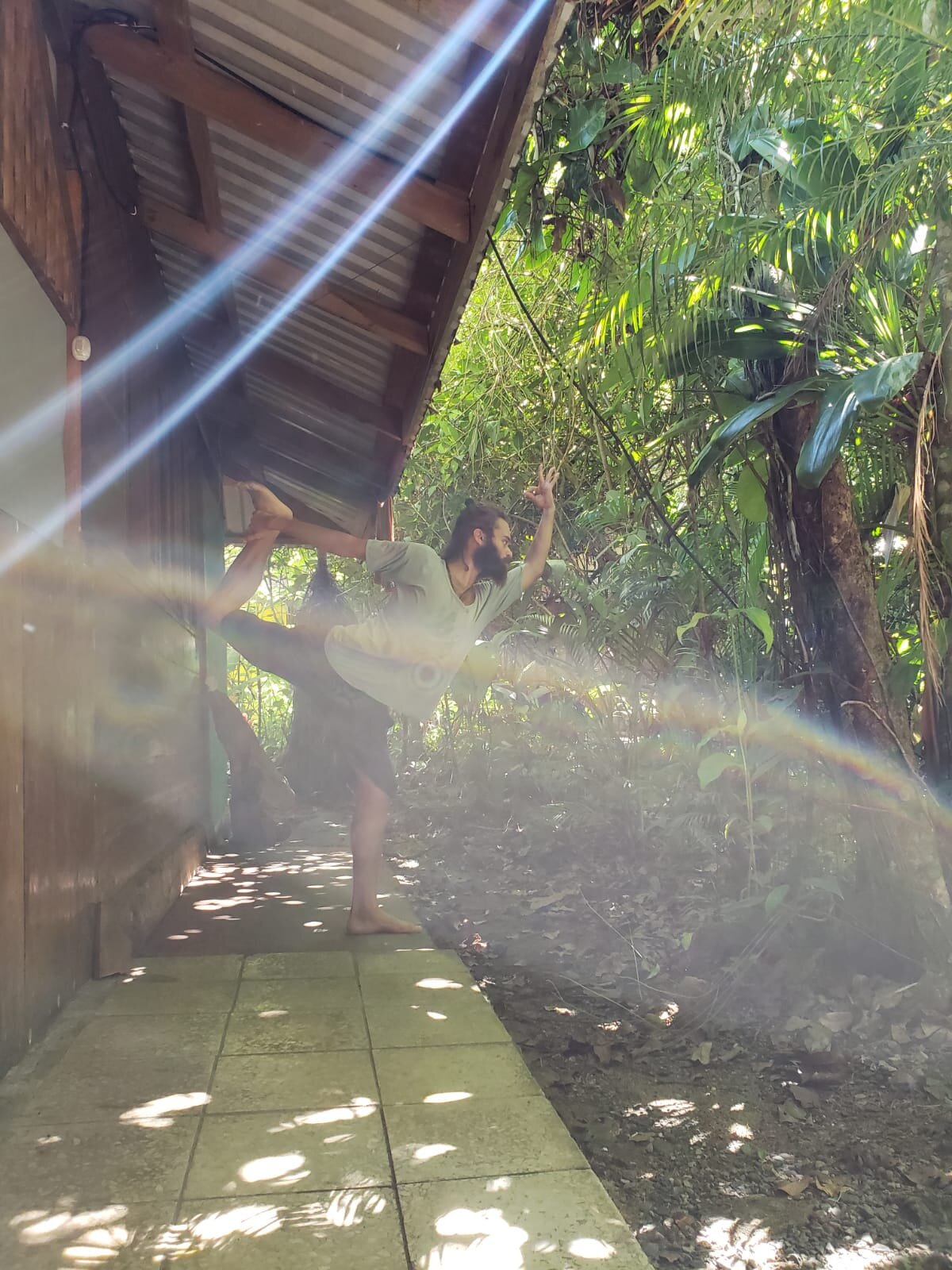Yoga means many things to many people.. since the beginning of time yogic path has been a path of awakening and remembering who we are. As we journey along the path, what yoga means changes and evolves as we do. Uniting mind, body and spirit, we may tune into and become one with the loving awareness of all that is.
All of our online students have an opportunity to express what yoga is to them and share it with the community if they wish. Erika recently share what yoga means to her and her purpose behind her practise and yogic path:
The true purpose of yoga is for the practitioner to discover the divine union of the body and the mind through movement, meditation and breath work in an effort to bring about self-awareness and spiritual liberation. This is a simplified description of what it means to live a yogic lifestyle as walking a yogic path is a nuanced adventure of self-discovery. In fact, there are eight stages of yoga that a practitioner should master before they are able to reach enlightenment. Please understand that this description of yoga sounds more intimidating than it really is. Yoga is not judgmental and there is no penalty for deciding that you want nothing more to do with it except take yoga classes offered at your gym. In truth, the easiest way for a person to become initiated into yoga is to develop a personal āsana practice.
Āsanas aren’t just the advanced poses you see on Instagram. They are postures that are meant to condition the body so that it becomes a cleansed vessel for the spirit. Through movement our bodies become connected with our minds and eventually our divine selves. A large component of yogāsanas is the prāṇāyāma or rhythmic breathing which is essential in alleviating stress. In scientific terms, when we suffer from chronic stress our autonomic nervous system, which consists of sympathetic and parasympathetic functions, goes awry. The sympathetic system handles our fight or flight response. This response while helpful for keeping us alive in dangerous situations has devastating consequences for our health if activated too often and for extended periods of time.
As it turns out, the most effective way to counteract the sympathetic nervous system, other than to remove the source of the stress is to intentionally activate the parasympathetic nervous system through slow rhythmic breathing in order to control the mind and calm the heart and body. This intentional breathing combined with meditation is what is instrumental in bringing about the cleansing peace that practitioners of yoga often feel after a session. While āsanas by themselves don’t represent the entirety of yoga, there is nothing wrong with a novice choosing āsanas as a place to start. Because yoga is a way to live, a person who starts a daily asana practice will soon find that her body will crave deeper and deeper connections to her mind and spirit.
-Erika L Harper LPC
Thank you so much Erika for your inspiring words and insight into the magical journey that is yoga!
Namaste. Sat Nam.








